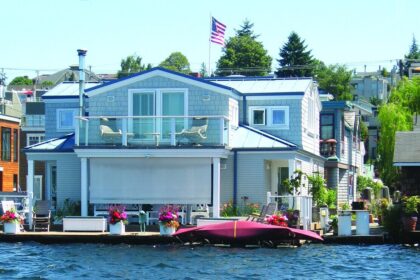Floating Property Insurance is for a Floating Home, Boathouse, or vessel (without an engine) intended for living on the water. Few specialty insurers handle this exposure. However, we have been doing this for many years and have some tips to assist you.
- If you qualify, choose a domestic insurer. This is always the preferred market but not everyone qualifies. Alternative coverage is available from a Lloyds type of surplus insurer. Some of these policies provide limited coverage. For example, sinking is not covered unless a named peril caused it.
- For floating homes, two levels of coverage are available that we call Broad and Basic. Broad coverage is preferred. Eligibility for this requires your floating home to be less than 30 years of age and meet other requirements—properties over 30 years old need recent renovations to be considered eligible.
- Flotation type matters. Fiberglass over wood flotation and less than three pontoons will not get coverage in a preferred market. Exclusions from coverage include flotation and failure except if a fire is the cause of loss.
- Please read your policy in full. Coverage is not as broad as the coverage you will find on a home, which sits on land, but is likely the best coverage available.
- Ask if you have replacement cost coverage on contents or if your coverage is actual cash value. For example, the replacement cost on a TV may be $1000, but the depreciated value may be $100. Replacement cost coverage does cost more. If a floating home is your secondary home, content coverage is excluded for theft.
- Floating properties over 30 years of age may need a marine survey for new business.
- Some marinas ask for pollution coverage. This coverage is generally intended for fuel spills in the marine world; however, floating properties have no fuel. Therefore, this coverage is available on a case-by-case basis at an additional premium.
Coverage for boathouses is also specialized.
Available coverage is again based upon age and length. Tips include:
- Insurers want to see them equipped with a fire extinguisher and a smoke alarm.
- Replacement value is tricky. We prefer to see it on the generous side as wreck removal coverage is either 5% or 10% of the insurance you have for the structure. If you have a boathouse insured at $50,000, 5% of this or $2500 will not be enough if you have to pay for wreck removal after a fire.
- You are responsible for what your floating property is insured for. If you do not know the cost to rebuild, an appraisal or an estimate will be helpful.
Toll Free 800-726-2728 | Local 206-273-6996 | info@anchormarinenet.com
IMPORTANT NOTE: This summary provides only a simplified description of insurance coverages in general and is not a statement of contract. For complete details of coverages, conditions, limits and losses not covered, be sure to read the actual policies, including all endorsements.

